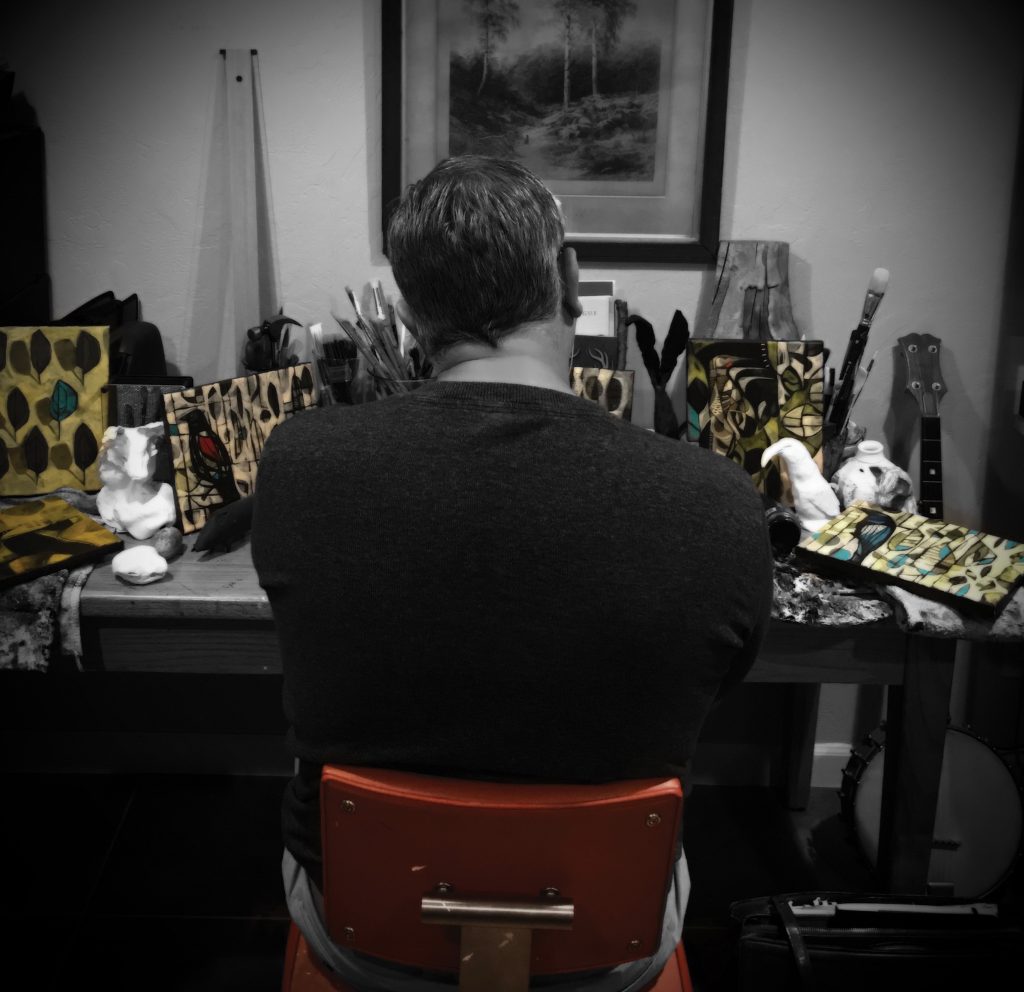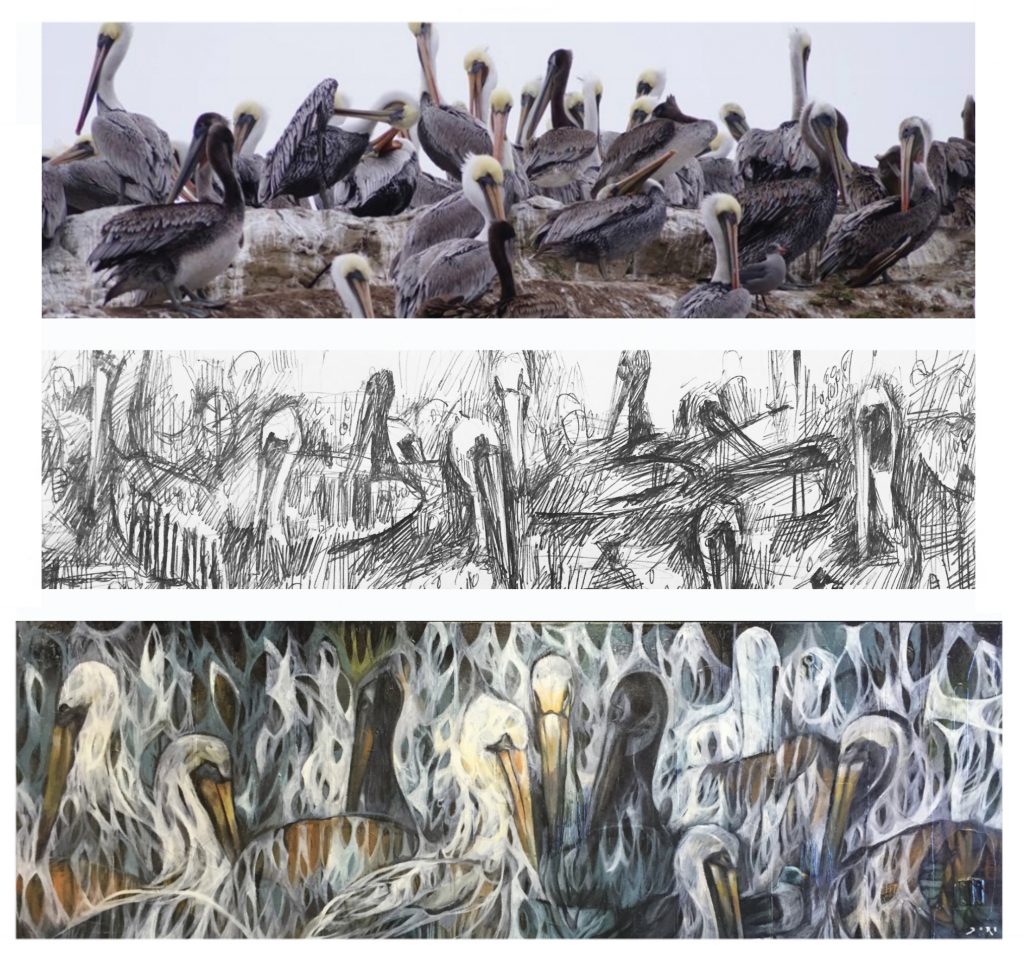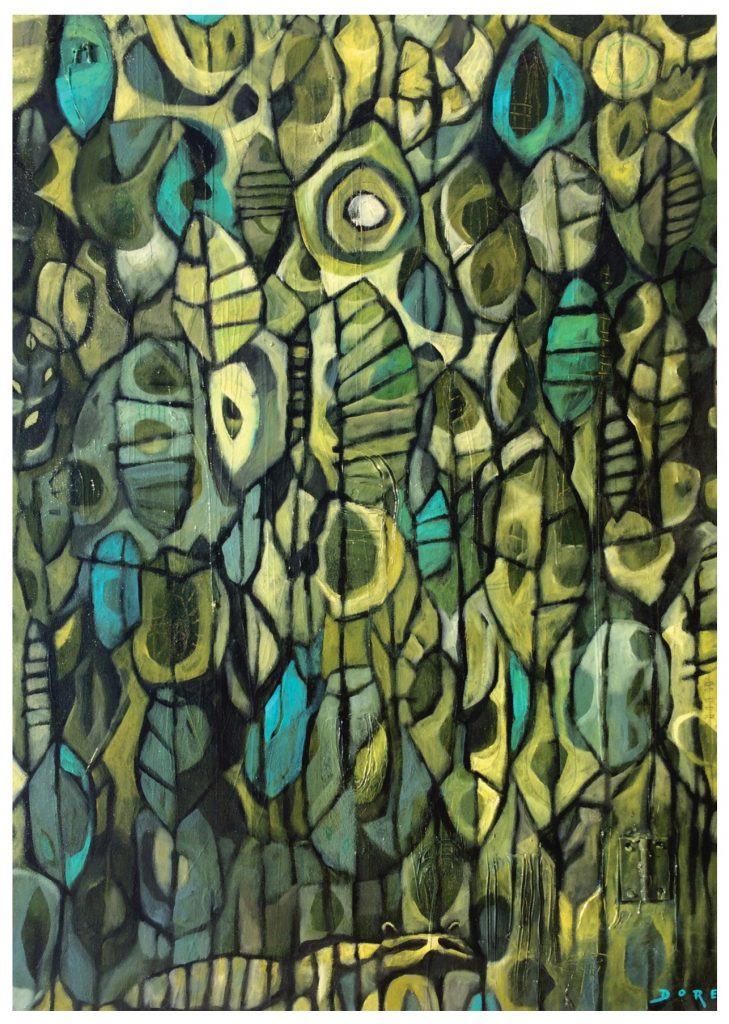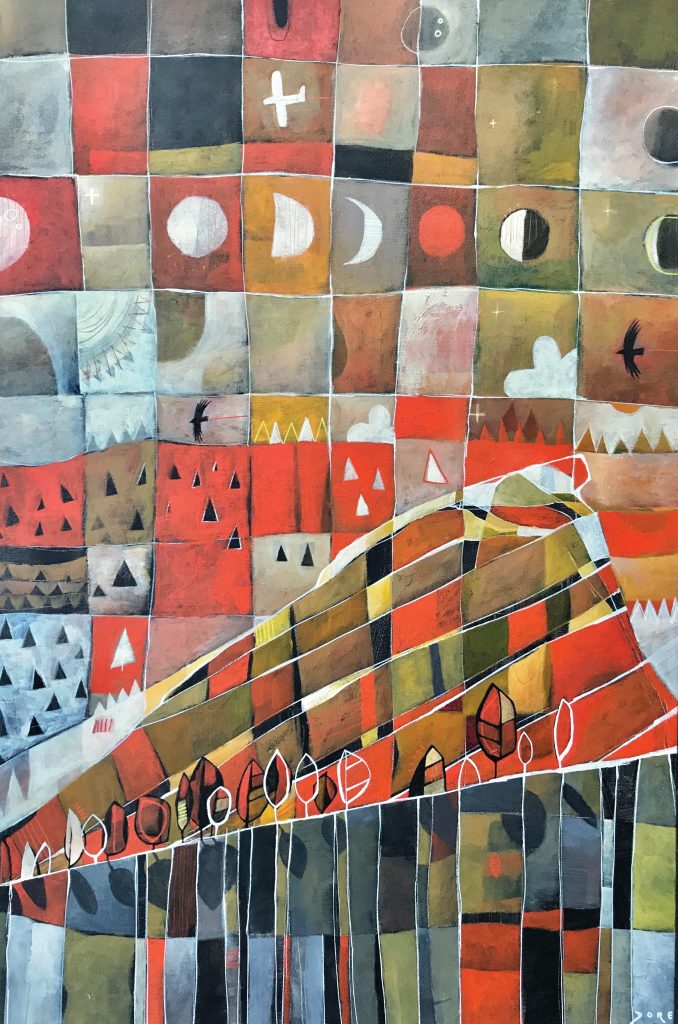
Twenty-one years ago, now-renowned abstract painter Christian Dore moved from London to Colorado and found himself a lovely new challenge. “When I moved to Colorado—after squinting for about six weeks because it’s so much brighter here than London—I realized we have this wonderful environment with wildlife and an abundance of color,” says Dore, a Centennial resident whose acclaim stems from his talent for mimicking Mother Nature’s colors and shapes through intense tints, a blend of techniques and whimsical hints of his starting subject matter. “With the extreme changing of the seasons, it’s always lively and there’s always inspiration to paint.”
A graduate of England’s Bournemouth and Poole College of Art and Design with a background in television and animation (with work at the BBC, Nickelodeon and MTV), Dore transitioned to becoming a full-time artist here. Influenced by Colorado scenery, he finds importance in feeling insignificant in a field of wildflowers or at the base of the foothills. Below, he shares how untamed vistas transformed him to the celebrated, award-winning artist he is today—showcased through more than 15 exhibits and installations and a treasured talent of private collections worldwide.
When did you first realize you were an artist?
“My artistic journey is honestly my whole life. Sometimes people will ask me: ‘How long did it take you to make this painting?’ I’ll say, ‘It’s taken 49 years to paint that painting.’ I remember thoroughly enjoying drawing early in my life and I realized from a young age I wanted to follow a creative avenue. I loved to draw; it was something I would do to relax. I’ve always enjoyed trying to create something from nothing.
“After I went to art college, I took a job in graphic design and animation. I enjoyed working in television, but as a creative you need an outlet to express yourself so I always had my artwork to fall back on. If I ever had a bad day at work, I would come home in the evening and force myself to paint. Within an hour, I’d feel much better.”
Tell us how your Centennial State views come into play.
“My surroundings are in my subconscious. I know my work doesn’t look like trees, but it’s an impression. I don’t tend to paint what I see; it’s more that I paint what I remember. So, the details are broken up—almost like a puzzle. I also have a lot of hidden elements within paintings. As in the wild, animals blend in beautifully. I have an expression: ‘I struggle constantly to try and create nature, yet nature effortlessly has no problem creating itself.’”
Where in Colorado do you draw the most inspiration?
“My biggest source of inspiration is Grand Lake. I have a cabin up there. Once, there was a moose right outside the place. He didn’t move and I just sat there and sketched him. That’s heaven for me. I also find inspiration in the foothills and Red Rocks. I like to walk around sketching in the Denver Zoo and along the High Line Canal.”
As an abstract artist, how do you recommend people shop for abstract art?
“If you see a piece you love, buy it. Don’t worry about matching the color of your couch or other décor in your home. You want art that stands out.”

Pelican Study. Courtesy Christian Dore 
Raccoon Under the Moon. Courtesy Christian Dore 
Red Rocks. Courtesy Christian Dore
SO, YOU WANT TO MAKE CREATING ART YOUR NEXT HOBBY
With all of the time we are spending at home and the very real need for activities that will help relieve stress amid the COVID-19 pandemic, “this is the time for art,” says Dore, who also teaches abstract sketching and painting classes. “This is the time for people to create and experience it.” His tips:
1. Let go and express yourself.
In class, Dore starts with simple shapes that overlap. “Everyone has shapes in their heads,” he says. Dore encourages students to put those shapes in a sketchbook. It helps switch on the artistic side of your brain, much like a writer shaking writer’s block. “Once you’ve developed your shape, we focus on overlapping it to create other shapes you hadn’t planned, therefore creating something in the subconscious,” explains the artist. The process allows you to “let go.” Dore says once he realized he had no control over his work, and there were no boundaries or rules, his creativity flourished.
2. If you’re struggling to decide on a color palette, escape into nature and become inspired by the hues. Dore uses just three colors for most of his pieces and finishes with an accent color. “The great thing about using just three colors is that, when you experiment with mixing them together, tons of different color variations are created,” he says.
3. Incorporate a “trademark item.” Dore hides a door hinge in the bottom of his paintings. It’s an ode to his love for imperfection, which he discovered when working summer jobs on construction sites—he was drawn to the beauty of rusty hardware. He has even thought about replacing his signature with the detail.


